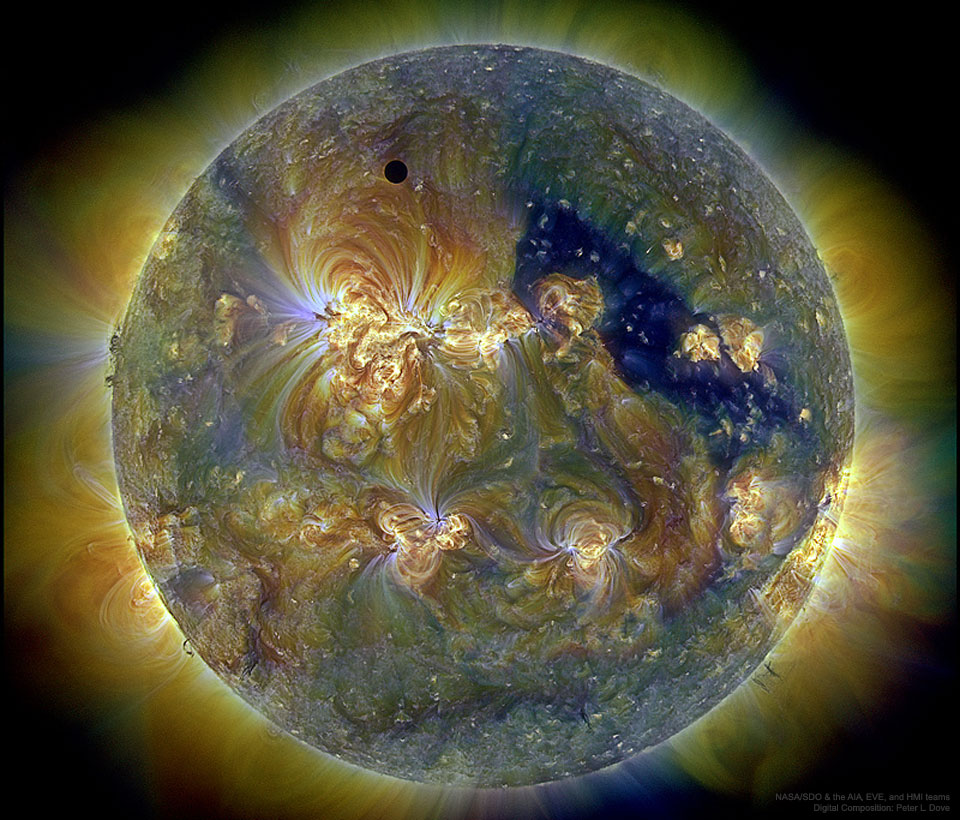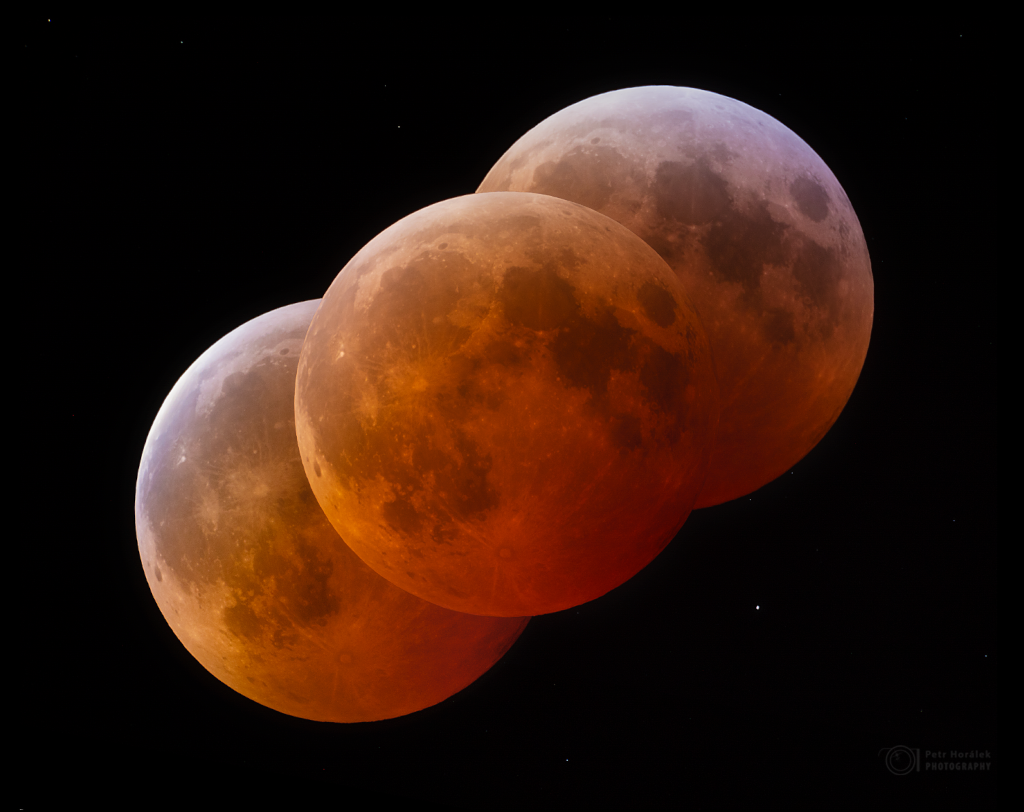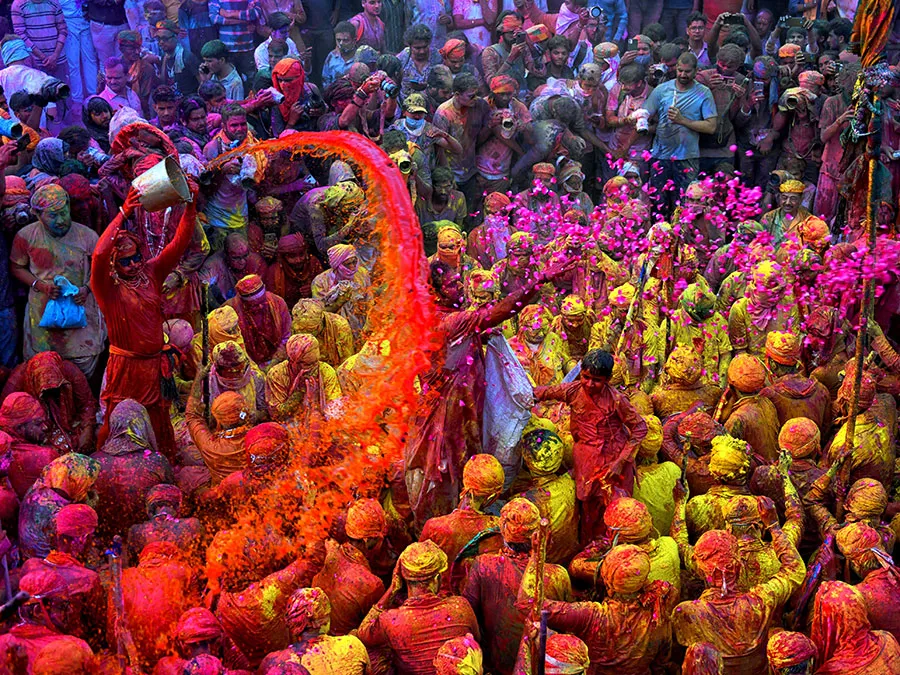Blog
Abraham John Bond Jr., known as Son Bonds (March 16, 1909 – August 31, 1947), was an American country blues guitarist, singer and songwriter. He was a working associate of Sleepy John Estes and Hammie Nixon. He was similar to Estes in his guitar-playing style. According to the music journalist Jim O’Neal, “the music to one of Bonds’s songs, ‘Back and Side Blues’ (1934), became a standard blues melody when Sonny Boy Williamson I, from nearby Jackson, Tennessee, used it in his classic “Good Morning, School Girl“. The best-known of Bonds’s other works are “A Hard Pill to Swallow” and “Come Back Home.”
more...This was a very unusual type of solar eclipse. Typically, it is the Earth’s Moon that eclipses the Sun. In 2012, though, the planet Venus took a turn. Like a solar eclipse by the Moon, the phase of Venus became a continually thinner crescent as Venus became increasingly better aligned with the Sun. Eventually the alignment became perfect and the phase of Venus dropped to zero. The dark spot of Venus crossed our parent star. The situation could technically be labeled a Venusian annular eclipse with an extraordinarily large ring of fire. Pictured here during the occultation, the Sun was imaged in three colors of ultraviolet light by the Earth-orbiting Solar Dynamics Observatory, with the dark region toward the right corresponding to a coronal hole. Hours later, as Venus continued in its orbit, a slight crescent phase appeared again. The next Venusian transit across the Sun will occur in 2117.

more...
Minoru Miki (Japanese: 三木 稔, 16 March 1930 – 8 December 2011) was a Japanese composer and Artistic director. He was known for promoting Japanese, Chinese and Korean traditional instruments as well as some of their performers.
In his catalogue these traditional instruments figure solo or in various types of ensembles, with and without Western instruments. His catalogue demonstrates a large stylistic and formal diversity including operas and other kinds of stage music; orchestral, concerto, chamber and solo music, as well as music for films. His work has found international recognition placing Miki in the company of other celebrated Japanese composers such as Tōru Takemitsu.
Minoru was a pioneer in the composition of contemporary classical music for large ensembles of traditional Japanese musical instruments. In 1964, he founded the Nihon Ongaku Shūdan (Pro Musica Nipponia ensemble), also known as Ensemble Nipponia, for which he has composed extensively.
more...Ramzan Paskayev (Chechen: Рамзан Паскаев) (born March 16, 1947, in Taraz, Kazakhstan) is a Chechen accordionist and folk musician. He is regarded by many as the contemporary successor to late Chechen accordionist Umar Dimayev.
more...
Fred Neil (March 16, 1936 – July 7, 2001 Cleveland) was an American folk singer-songwriter active in the 1960s and early 1970s. He is mainly known through other people’s recordings of his material – particularly “Everybody’s Talkin’“, which became a hit for Harry Nilsson after it was used in the film Midnight Cowboy in 1969. Though highly regarded by contemporary folk singers, he was reluctant to tour and spent much of the last 30 years of his life assisting with the preservation of dolphins.
more...Thomas Lee Flanagan (March 16, 1930 – November 16, 2001) was an American jazzpianist and composer. He grew up in Detroit, initially influenced by such pianists as Art Tatum, Teddy Wilson, and Nat King Cole, and then by bebop musicians. Within months of moving to New York in 1956, he had recorded with Miles Davis and on Sonny Rollins‘ album Saxophone Colossus. Recordings under various leaders, including Giant Stepsof John Coltrane, continued well into 1962, when he became vocalist Ella Fitzgerald‘s full-time accompanist. He worked with Fitzgerald for three years until 1965, and then in 1968 returned to be her pianist and musical director, this time for a decade.
After leaving Fitzgerald in 1978, Flanagan attracted praise for the elegance of his playing, which was principally in trio settings when under his own leadership. In his 45-year recording career, he recorded more than three dozen albums under his own name and more than 200 as a sideman. By the time of his death, he was one of the most widely admired jazz pianists and had influenced both his contemporaries and later generations of players.
more...Ralph Anthony MacDonald (March 15, 1944 – December 18, 2011) was an American percussionist, steelpan virtuoso, songwriter, musical arranger, and record producer.
His compositions include “Where Is the Love“, a Grammy Award winner for the duet of Roberta Flack and Donny Hathaway; “Just the Two of Us“, recorded by Bill Withers and Grover Washington Jr.; and “Mister Magic” recorded by Grover Washington Jr.
more...On March 14 the Moon was Full. In an appropriate celebration of Pi day, that put the Moon 3.14 radians (180 degrees) in ecliptic longitude from the Sun in planet Earth’s sky. As a bonus for fans of Pi and the night sky, on that date the Moon also passed directly through Earth’s umbral shadow in a total lunar eclipse. In clear skies, the colors of an eclipsed Moon can be vivid. Reflecting the deeply reddened sunlight scattered into Earth’s shadow, the darkened lunar disk was recorded in this time series composite image from Cerro Tololo Observatory, Chile. The lunar triptych captures the start, middle, and end of the total eclipse phase that lasted about an hour. A faint bluish tint seen just along the brighter lunar limb at the shadow’s edge is due to sunlight filtered through Earth’s stratospheric ozone layer.

more...
Philip Chapman Lesh (March 15, 1940 – October 25, 2024 Berkeley, CA) was an American musician and a founding member of the Grateful Dead, with whom he developed a unique style of playing improvised six-string bass guitar. He was their bassist throughout their 30-year career.
After the group disbanded in 1995, Lesh continued the tradition of Grateful Dead family music with a side project, Phil Lesh and Friends, which paid homage to the Dead’s music by playing their repertoire, as well as songs by members of his own group. Lesh operated a music venue called Terrapin Crossroads. From 2009 to 2014, he performed in Furthur alongside former Grateful Dead bandmate Bob Weir. He scaled back touring in 2014 but continued to perform concerts.
more...Sylvester Stewart (born March 15, 1943), better known by his stage name Sly Stone, is an American musician, songwriter, and record producer who is most famous for his role as frontman for Sly and the Family Stone, playing a critical role in the development of funk with his pioneering fusion of soul, rock, psychedelia and gospel in the 1960s and 1970s. AllMusic stated that “James Brown may have invented funk, but Sly Stone perfected it,” and credited him with “creating a series of euphoric yet politically charged records that proved a massive influence on artists of all musical and cultural backgrounds.” Crawdaddy! has credited him as the founder of the “progressive soul” movement.
Born in Texas and raised in the Bay Area city Vallejo in Northern California, Stone mastered several instruments at an early age and performed gospel music as a child with his siblings (and future bandmates) Freddie and Rose. In the mid-1960s, he worked as both a record producer for Autumn Records and a disc jockey for San Francisco radio station KDIA. In 1966, Stone and his brother Freddie joined their bands together to form Sly and the Family Stone, a racially integrated, mixed-gender act. The group would score hits including “Dance to the Music” (1968), “Everyday People” (1968), “Thank You (Falettinme Be Mice Elf Agin)” (1969), “I Want to Take You Higher” (1969) “Family Affair” (1971) and “If You Want Me to Stay” (1973) and acclaimed albums including Stand! (1969), There’s a Riot Goin’ On (1971) and Fresh(1973).
By the mid-1970s, Stone’s drug use and erratic behavior effectively ended the group, leaving him to record several unsuccessful solo albums. He toured or collaborated with artists such as Parliament-Funkadelic, Bobby Womack, and Jesse Johnson. In 1993, he was inducted into the Rock and Roll Hall of Fame as a member of the group. He took part in a Sly and the Family Stone tribute at the 2006 Grammy Awards, his first live performance since 1987. He released the autobiography Thank You (Falettinme Be Mice Elf Agin) in 2023.
more...Ryland Peter Cooder (born March 15, 1947) is an American musician, songwriter, film score composer, record producer, and writer. He is a multi-instrumentalist but is best known for his slide guitar work, his interest in traditional music, and his collaborations with traditional musicians from many countries.
Cooder’s solo work draws upon many genres. He has played with John Lee Hooker, Captain Beefheart, Taj Mahal, Gordon Lightfoot, Ali Farka Touré, Eric Clapton, the Rolling Stones, Van Morrison, Neil Young, Randy Newman, Linda Ronstadt, Vishwa Mohan Bhatt, David Lindley, the Chieftains, Warren Zevon, Manuel Galbán, the Doobie Brothers, Little Feat, and Carla Olson and the Textones (on record and film). He formed the band Little Village, and produced the album Buena Vista Social Club (1997), which became a worldwide hit; Wim Wenders directed the documentary film of the same name(1999), which was nominated for an Academy Award in 2000.
Cooder was ranked at No. 8 on Rolling Stone magazine’s 2003 list of “The 100 Greatest Guitarists of All Time”, while a 2010 list by Gibson Guitar Corporation placed him at No. 32. In 2011, he published a collection of short stories called Los Angeles Stories.
more...Charles Lloyd (born March 15, 1938) is an American jazz musician and composer. He primarily plays tenor saxophone and flute and occasionally other reed instruments, including alto saxophone and the Hungarian tárogató. Lloyd’s primary band since 2007 has been a quartet including pianist Jason Moran, acoustic bassist Reuben Rogers, and drummer Eric Harland.
more...Samuel John “Lightnin’” Hopkins (March 15, 1912 – January 30, 1982) was an American country blues singer, songwriter, guitarist and occasional pianist from Centerville, Texas. In 2010, Rolling Stone magazine ranked him No. 71 on its list of the 100 greatest guitarists of all time.
The musicologist Robert “Mack” McCormick opined that Hopkins is “the embodiment of the jazz-and-poetry spirit, representing its ancient form in the single creator whose words and music are one act”. He influenced Townes Van Zandt, Hank Williams, Jr., and a generation of blues musicians such as Stevie Ray Vaughan, whose Grammy-nominated song “Rude Mood” was directly inspired by the Texan’s song “Hopkins’ Sky Hop”. In his own lifetime, Hopkins was one of the initial inductees in 1980 to the Blues Hall of Fame.
more...
More Posts
- Arthur Big Boy Crudup
- World Music with Quarto Vozes
- Daily Roots with Lion Rezz
- The Cosmos with Abell 3827
- Keith Moon
- Terje Rypdal
- Gil Coggins
- Wynona Carr
- World Music with Li Baomei & Jiang Zhongde
- Daily Roots with Joggo ft. Lutan Fyah
- The Cosmos with M78
- Donna Godchaux
- Dale Hawkins
- Malachi Favors
- Sonny Thompson
- John Lee Hooker
- Claude Debussy
- World Music with Kaushiki Chakraborty
- Daily Roots with Rod Anton
- The Cosmos with IC 1396

